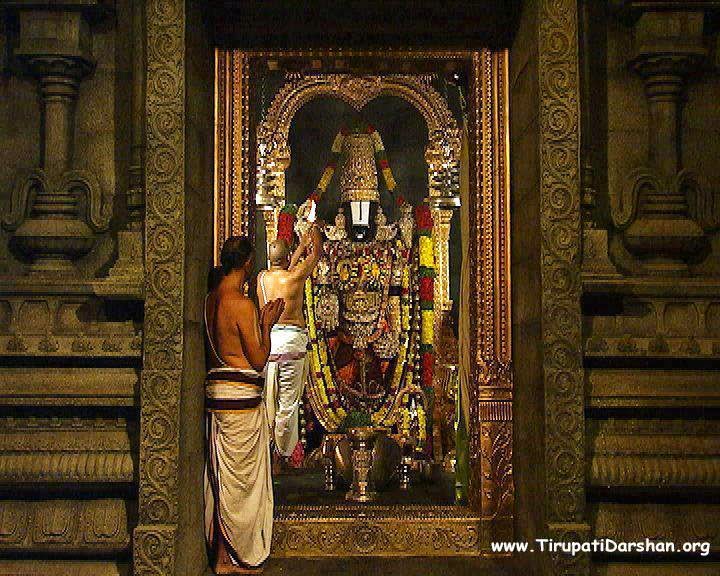One is born from a woman, ends up in Earth.
Hinduism accords the respect these deserve.
A woman is called Gruha Lakshmi, one who brings Prosperity to Home.
Tamil calls her Illal, one who owns/rules the Home.

Similarly Earth is given the respect it deserves for it supports from Birth to Death.
Earth is eulogized as Mother and there are Vedic Sukthas in praise of the Earth, Bho Suktham.
There is Neela Suktham, Neela is considered to be the consort of Lord Vishnu.
Such being the case, there is no wonder in Hinduism calling the Sanctum Sanctorum of a Temple as Garbha Gruha, Gharbha meaning The Womb and Gruha, the Home.
Tamil calls The Gharbhagriha as Karuvarai, meaning ‘where the Foetus stays’
One’s first Home is the womb.
‘
A Hindu temple consists of an inner sanctum, thegarbha griha or womb-chamber, where the primary idol or deity is housed along with Purusa. The garbhagriha is crowned by a tower-like Shikhara, also called the Vimana. The architecture includes an ambulatory for parikrama(circumambulation), a congregation hall, and sometimes an antechamber and porch.
The Hindu temple architecture reflects a synthesis of arts, the ideals of dharma, beliefs, values and the way of life cherished under Hinduism. It is a link between man, deities, and the Universal Purusa in a sacred space.
In ancient Indian texts, a temple is a place for Tirtha – pilgrimage.It is a sacred site whose ambience and design attempts to symbolically condense the ideal tenets of Hindu way of life. All the cosmic elements that create and celebrate life in Hindu pantheon, are present in a Hindu temple – from fire to water, from images of nature to deities, from the feminine to the masculine, from kama to artha, from the fleeting sounds and incense smells to Purusha – the eternal nothingness yet universality – is part of a Hindu temple architecture.
….
Garbhagriha or Garbha gruha (garbha gṛha) (Sanskrit: गर्भगॄह) is the sanctum sanctorum, the innermost sanctum of a Hindu templewhere resides the murti (idol or icon) of the primary deity of the temple. Literally the word means “womb chamber”, from the Sanskritwords garbha for womb and griha for house. Only ‘priests’ (pujari) are allowed to enter this chamber.
Although the term is often associated with Hindu temples, it is also found in Jain and Buddhist temples…
In temples with a spire or vimana, this chamber is placed directly underneath it, and the two of them form the main vertical axis of the temple. These together may be understood to represent the axis of the world through Mount Meru. The garbha griham is usually also on the main horizontal axis of the temple which generally is an east-west axis. In those temples where there is also a cross-axis, the garbha gṛha is generally at their intersection.
Generally the garbhagriha is a windowless and sparsely lit chamber, intentionally created thus to focus the devotee’s mind on the tangible form of the divine within it. Entrance to the garbha grha may be restricted to priests who perform the services there…
In the Dravida style, the garbhagriha took the form of a miniature vimana with other features exclusive to southern Indian temple architecture such as the inner wall together with the outer wall creating a pradakshina around the garbhagriha. The entrance is highly decorated. The inner garbhagriha or shrine became a separate structure, more elaborately adorned over time.
More often garbhagriha is square and sits on a plinth, its location calculated to be a point of total equilibrium and harmony as it is representative of a microcosm of the Universe. In the centre is placed the image of the deity.
But sometimes, for the temples of feminine deities, the garbagriha is rectangular. For example in the temple of Varahi Deula in Chaurasi.
The present structure of most of these temples is a two-storeyed vimana with a square garbhagriha and a surrounding circumambulatory path, an ardha-mandapa and a narrower maha-mandapa.
https://en.wikipedia.org/wiki/Garbhagriha
https://en.wikipedia.org/wiki/Hindu_temple_architecture
Natarja , Chidambaram Plan Image Credit. http://natarjatemplechidambaram.blogspot.in/








Leave a comment